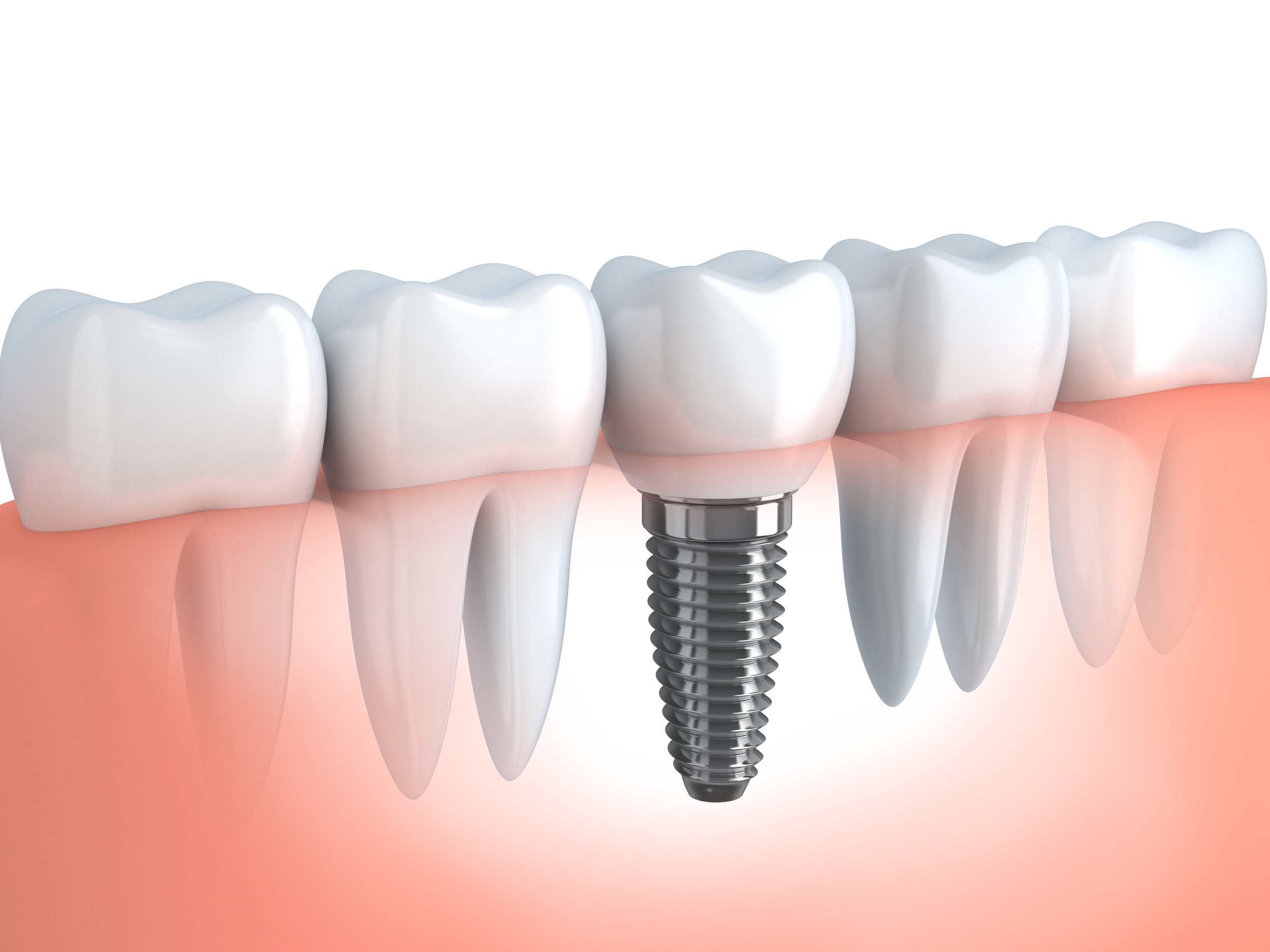
Implants
A dental implant mimics the form and function of a natural tooth, which consists of a root and a crown. The crown is the visible part of your tooth. It is used to chew food and is therefore the most susceptible to cavities. The crown is attached to the jawbone by way of the root. When decay has gone deep enough or when a periodontal disease has advanced enough to warrant an extraction, the entire tooth, root and all, is taken out. The dental implant is a titanium root that gets fitted into a socket in the area of a missing tooth. Once the root heals, we place an artificial crown on top. The new crown is customized to match your bite and the color of your teeth. Implants can be single units, attached to form bridges or used as anchors for dentures.
What are the benefits of getting teeth implants?
They look and act like natural teeth
They can last a lifetime with the right care
You don’t need any adhesives
They improve appearance, comfort, and speech
It’s easier to eat
What is a dental implant?
A dental implant is a titanium post that's integrated into the bone in the area of a missing tooth that acts as an anchor for a permanent artificial crown, bridge or denture. The process can be straightforward and not nearly as painful as it sounds.
A dental implant consists of two main components (not including the crown)
Titanium implant (post) - placed directly into bone and allowed to heal for a few months
Custom made abutment (core) - the neck piece of an implant that allows proper angulation of crowns and attachments.
Dental implants are permanent, stable, and they look and feel like natural teeth. Implant dentistry has advanced to the point that implants can be placed with a high degree of confidence, skill and predictability. Dental implants can have better long-term success than other dental restorations such as crowns or bridges.
Implants can be successful in replacing teeth that are failing since implants require a good amount of available bone at a particular site. Teeth present in the mouth tend to have more available bone than an area where the tooth has been missing for years. However, grafting techniques allow for improving the amount of available bone at a particular site for an implant.
Dental implants add support to your chewing ability. When you lose a single tooth, the remaining teeth are forced to carry a heavier load and will tend to wear out in certain areas. Adding an implant means you gain back the support you lost, lessening stress on the remaining teeth.
What else can implants be used for besides replacing one tooth?
Implants can be placed in multiple sites of the jaw to allow for attachment to a denture for a patient who wishes to have a fixed denture (replacing all teeth). Furthermore, implants can be placed in multiple sites to act as support for a fixed bridge.
How long does the process take?
The process can take approximately 6 months to complete as the physiology of bone alterations take time to heal and for integration of the implant to take place. If bone grafting is necessary, further time may be required. After the implant has been determined to be stable, it can be restored with an abutment/crown and monitored over time.
Do I still have to brush my implant since it is artificial?
It is critical to maintain good oral hygiene by brushing and flossing around implants as the surrounding gums and bone are still susceptible to disease and infection.

